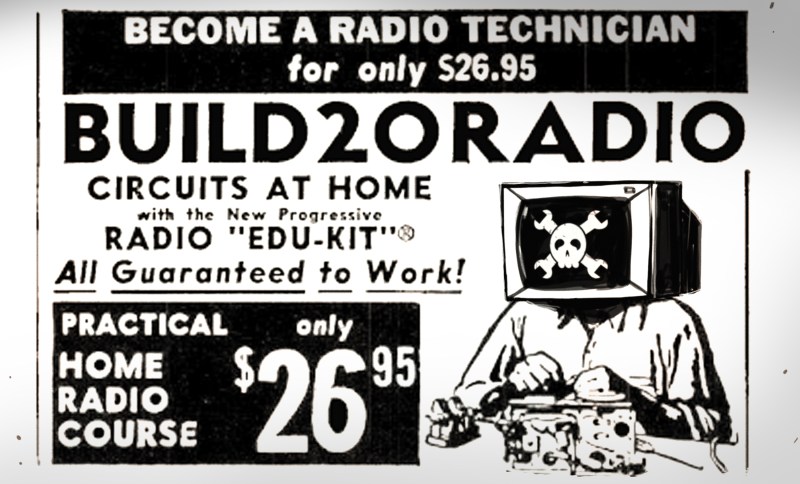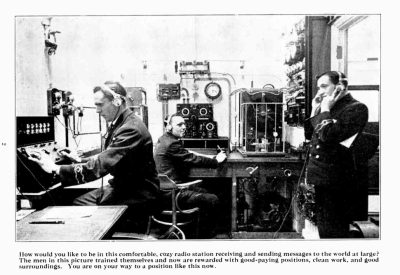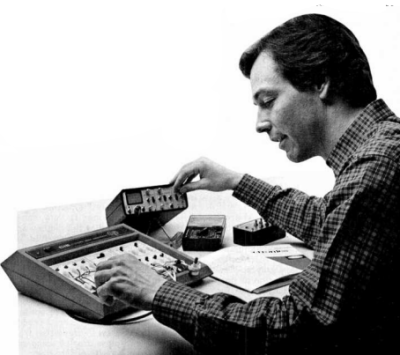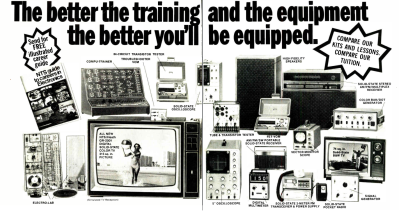
I don’t think there was ever a correspondence school called the “Close Cover Before Striking School” but since book matches — which used to be a thing when most people smoked — always had that text on them anyway perhaps there should have been. There was a time when electronic magazines, billboards, and even book matches were constantly bombarding us with ads to have a career in electronics. Or computers. Or TV repair. So while we think of distance learning as a new idea, really it is just the evolution of these old correspondence schools which date back quite some time.
How far exactly? Hard to say. There’s evidence of some distance learning going back as far as 1728. In 1837, there was a correspondence course to learn shorthand. By 1858, the University of London started its external program for correspondence work and the University of Chicago had a home study division in 1892. Radio was an early choice of topic, too. In the United States, the United Wireless Telegraph company started a training school — later the Marconi Institute — in 1909. However, it is doubtful that there was any correspondence training going on there until much later.
NRI or National Radio Institute was doing correspondence classes from around 1914. Philo Farnsworth completed an NRI course in radio servicing while in college. There are some older schools, too. ICS — International Correspondence Schools — started in 1890 and still operates as the Penn Foster Career School. DeVry, founded in 1931, is still around as is the Cleveland Insitute of Electronics, which has been around since 1934. Of course, many of these changed business models over the years. Some, like National Technical Schools, didn’t make enough changes and went out of business.
Their heyday, though, was the post-World War II days. Veterans were anxious to spend Uncle Sam’s money to get a new career, and many had been trained or exposed to electronics in the service. TV was exploding, too, which further stimulated demand. Thumb through an electronics magazine from those days and you’ll find plenty of ads for these schools.
Today online training is the new correspondence class, but you don’t see much radio and electronics training like this these days. Sure, you can earn an entire EE degree online, but can you learn how to fix a radio?
Marketing

There’s an old saying in advertising: Don’t sell steak, sell sizzle. These correspondence courses generally targeted people of modest circumstances, out of work or working a dead-end job who wanted to better themselves. Many hinted that more education was the key to being promoted at work, or that you could make money in your own business. One of NRI’s courses from 1924 starts with an image. Note that these men are not outside working in the elements which is a major inducement if you are spending your days working in the sun and the rain. An NRI promotional booklet reports, “Many radio experts make $40, $60, $75 a week and more.” Pretty good money in 1935.
As you might expect, the ads overwhelmingly targeted men. Ads ran in electronics magazines, but also in other kinds of magazines the target audience might read about science, mechanics, and other related fields. The ads mostly promised the ability to make money, find a job, start a business, or get a promotion.
Evolution
The early course, like the one that included the above picture, were really just electronics books that had quizzes they would grade for you. These were very much like any other electronics book you’ve ever seen. They describe components, schematics, what makes a circuit, Ohm’s law, power calculations. The questions were answered free form and — in this course, at least — didn’t require any higher math. For example, “Name five insulating materials.” and “What is a kilowatt?”
Obviously, there are things we don’t think about too much but were important at the time like spark gaps and motor-generators. Overall, you could probably have found any basic book in your library and done the same thing except they wouldn’t give you a certificate (and if you scored over 90%, you’d be an “honors man.”
By 1938, at least, there was a realization that you needed more hand-on training. The Radio Servicing Course from Radio Technical Institute included a Knight Kit receiver from Allied Radio. The regenerative receiver used two 30 tubes. In fact, large chunks of the course came from suppliers like the “Supreme Instruments Corporation of Greenwood, Mississippi.” Presumably, you could buy their oscilloscope and other tools covered in the course.
It also became common to teach a bit of the “the business” in these classes. For example, RTI suggests:
The new profitable field of installing additional extra speakers is open to all servicemen. This type of convenience is wanted by practically all radio owners and should be suggested
on every radio repair call. Most homes have only one radio, in a single room of the house. To hear radio programs in other sectons this radio must be played at volume levels that prove nervewracking to all close to the radio and annoys the neighbors due to the loudness.

While these courses were little more than books with graded tests, there were some serious training materials produced by NRI. As early as 1930 they had a 1600-page course that covered quite a bit of theory and practice. There was even a unit on “radio prospecting” which we might think of today as using metal detectors.
After World War II, soldiers had “GI Bill” money to spend on education and these companies were ready to take it. Radios were more complex than ever and TV also drove demand for people who could install and service electronics. Later, much later, computers were also a consumer item and training companies offered some instruction in basic computer servicing, too.
Kits and Bargains
Kits and equipment turned out to be the big differentiator in classes and the companies often used Heathkit so the student built their own equipment including, often, some form of TV. NRI was known to produce its own kits under either its own name or the Conar labels.
For example, a CIE class offered a 5 MHz Heathkit oscilloscope, a 19-inch TV, and a color bar generator. NTS had a similar offering, or you could learn about computers with a Heathkit H8. The NTS ad below from 1977 shows quite a haul of stuff, including a 315 square-inch TV! Keep in mind that a CRT that is 18 inches square has 324 square inches and we would call a 25″ TV.

Many times, kits used components left over from other experiments or were themselves experiments. For example, during construction, you might be instructed to leave out a component and demonstrate the effect it had.
There was one bargain basement educational program that advertised quite a bit. Edu-Kit offered a practical home radio course for under $30. This included tools and a soldering iron. The course claimed to have you build twelve receivers, three transmitters, a square wave generator, an amplifier, a signal tracer, a signal injector, and a code oscillator. Of course, the trick is, you probably weren’t able to keep them all assembled at the same time or they had multiple purposes. After all, a square wave generator is a signal injector and when connected to a signal tracer/amplifier, would give you a code practice oscillator.
Cost
Outside of the Edu-Kit, I never found the price of any of these courses. Presumably, the ones with all the kits would have cost quite a bit, especially in adjusted dollars. However, reading between the lines in some of the ads and promotional material, it seems like many of these schools let you pay in installments. Presumably, you’d pay some, get some materials, and then pay some more to get the rest.
Aftermath
Where are these schools now? They still exist, some of them even the same companies. It seems, though, that paradoxically, these distance learning pioneers have become more traditional brick-and-mortar schools. Maybe the death of readily-available kits can be blamed. After all, you could easily deliver coursework via the Internet and collect assignments the same way. It is harder to do the kits, but some of the virtual labs we’ve seen on EdX are pretty impressive.
Of course, the service business isn’t what it used to be either. When you can go to the big box store and replace a bad TV with a much better one for a fairly cheap price, how much will you pay to have it repaired? The economics of repair don’t work well when things get cheaper and better rapidly.
Part of the issue with these schools — particularly the ones that took Federal money for the GI bill or student loans — is that there was a lot of potential for abuse of the system. In 1951, for example, 1,677,000 veterans attended “for profit” schools, yet only 20% of them completed their studies. Many would sign up, get a TV as part of the course, and then drop out. The government tried to crack down without much success. A 1972 GAO report found that 75% of veterans did not complete correspondence courses. By 1992, the government finally took steps to reduce the flow of money available to these schools.
So it wasn’t just one thing that caused these schools to change or perish. It was everything. While I probably wouldn’t spend a few thousand on some books and Heathkits, I would sure plunk down $30 to build 20 radio circuits at home. It feels like the end of this era took something with it.
0 Commentaires